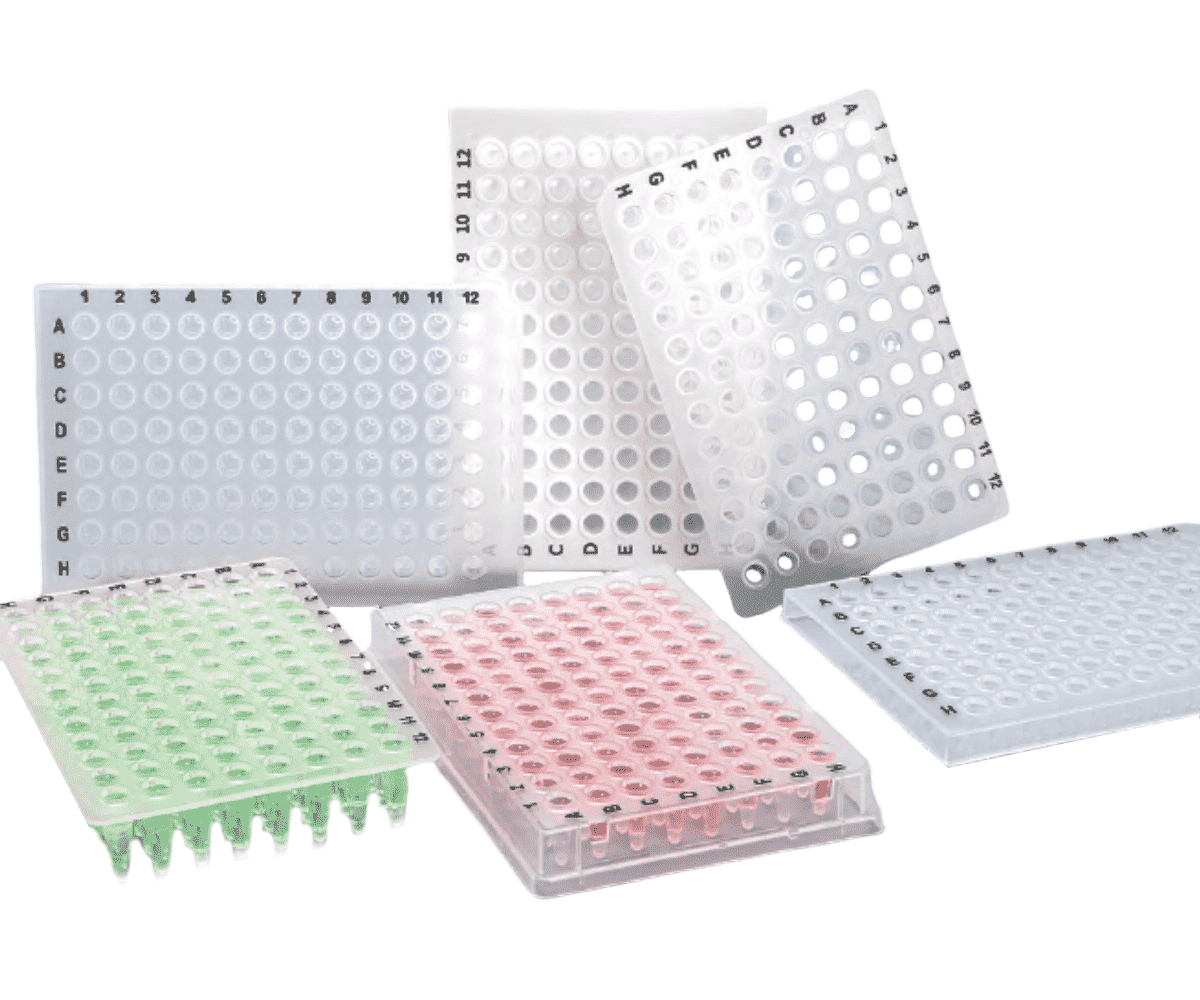- Home page
- Product Catalog
- PCR plates
PCR plates
The PCR plate is the carrier of an amplification reaction system in Polymerase Chain Reaction (PCR) experiments, which is widely used in genetics, biochemistry, immunology, medicine and other fields. The raw materials of the GVS PCR plates conform to USP Class VI standards. The plate surface is flat, firm and not easy to deform. The thin wall design of the tube body features good thermal conductivity and ensures high-efficiency PCR reaction.
Property
Thin tube wall design, uniform thickness, rapid and uniform heat transfer, reliable results and strong repeatability.
The plate surface is flat and firm, resistant to warping, and remains reliable and non-deformable in automated, high temperature and high pressure (121°C, 20 min) processes, high-speed centrifugation (2000 ×g) and other operations.
The edge of the wells protrude to prevent cross-contamination and to facilitate sealing, which can effectively reduce the evaporation of samples after sealing.
Black letter markings to help quickly identify and trace samples when manually adding samples.
Transparent and white plates are available. The white PCR plate is good for reading low-signal fluorescence values, reduce background fluorescence interference, and are more suitable for qPCR experiments.
The plate type conforms to SBS/ANSI international standards; high adaptability and compatible with manymainstream brands of PCR/qPCR instruments.
Each well is tested for 100% leak tightness to ensure safe sample handling.
Human-derived DNA-free, DNase/RNase-free, pyrogen-free, PCR inhibitor-free, ATP-free.
Characteristics
- Specification
- 96-well non-skirted, 96-well semi-skirted 96-well agree fully skirted
- Capacity
- 0.2 mL/well
- Color
- Transparent, white
- Material
- Polypropylene (PP), conforming to USP Class VI standards
Product Variants
Multiple versions of PCR plates are available.
Product Variants
9 available results
-
PLAJPCRD01096A-
- Capacity(mL)
- 0,2
- Specification(Well)
- 96
- Skirted
- Non-skirted
- Color
- Transparent
- Sterile
- Y
- "Qty.Per Box"
- 10
- "Qty. Per Case"
- 100
-
PLAJPCRD10096A-
- Capacity(mL)
- 0,2
- Specification(Well)
- 96
- Skirted
- Semi-skirted
- Color
- Transparent
- Sterile
- N
- "Qty.Per Box"
- 10
- "Qty. Per Case"
- 100
-
PLAJPCRD10200A-
- Capacity(mL)
- 0,2
- Specification(Well)
- 96
- Skirted
- Non-skirted
- Color
- Transparent
- Sterile
- N
- "Qty.Per Box"
- 10
- "Qty. Per Case"
- 100
-
PLAJPCRD11096A-
- Capacity(mL)
- 0,2
- Specification(Well)
- 96
- Skirted
- Semi-skirted
- Color
- Transparent
- Sterile
- Y
- "Qty.Per Box"
- 10
- "Qty. Per Case"
- 100
-
PLAJPCRD20096A-
- Capacity(mL)
- 0,2
- Specification(Well)
- 96
- Skirted
- Fully skirted
- Color
- Transparent
- Sterile
- N
- "Qty.Per Box"
- 10
- "Qty. Per Case"
- 100
-
PLAJPCRD21096A-
- Capacity(mL)
- 0,2
- Specification(Well)
- 96
- Skirted
- Fully skirted
- Color
- Transparent
- Sterile
- Y
- "Qty.Per Box"
- 10
- "Qty. Per Case"
- 100
-
PLAJPCRE00096A-
- Capacity(mL)
- 0,2
- Specification(Well)
- 96
- Skirted
- Non-skirted
- Color
- White
- Sterile
- Y
- "Qty.Per Box"
- 10
- "Qty. Per Case"
- 100
-
PLAJPCRE10096A-
- Capacity(mL)
- 0,2
- Specification(Well)
- 96
- Skirted
- Semi-skirted
- Color
- White
- Sterile
- Y
- "Qty.Per Box"
- 10
- "Qty. Per Case"
- 100
-
PLAJPCRE20096A-
- Capacity(mL)
- 0,2
- Specification(Well)
- 96
- Skirted
- Fully skirted
- Color
- White
- Sterile
- Y
- "Qty.Per Box"
- 10
- "Qty. Per Case"
- 100
